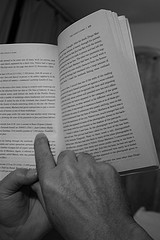 How many times have we shared information with someone, without being able to determine exactly where we’ve obtained this information (“I read somewhere”)? And how many times that same information has proved to be true only in a partial way?, does or has corresponded only in a limited way with the information from the original source? This phenomenon has a particular name, the amnesia of source, and about it about this post.
How many times have we shared information with someone, without being able to determine exactly where we’ve obtained this information (“I read somewhere”)? And how many times that same information has proved to be true only in a partial way?, does or has corresponded only in a limited way with the information from the original source? This phenomenon has a particular name, the amnesia of source, and about it about this post.
In a strict sense, the AF is a neurological disease that causes a peculiar dysfunction of the memory. But, of course, the fact that we can not be attributed to a information a exact source does not imply that we suffer from a neurological disease. Thus, it would be more correct to speak of an error monitoring source, since the monitoring of a source is the ability to retrieve information from memory. For this post, however, I will use the name “amnesia ” source”, since that is the most popular.
Why occurs the amnesia of source? In the study of memory, we usually distinguish different types. Here we are interested in two of them: first, the episodic memory, whose operation is based on parameters of space-time, so that allows us to remember events related to space, places and times specific; in the second place, the semantic memory, which is the one that encodes the information of the abstract, conceptual (Manzzoni; 2010).
A simple example will allow us to understand the difference between the two memories. Suppose that I am on vacation, in a village, and I go out for a walk: I stop to contemplate the great tree that presides over the square. For a while, this memory will be stored in a specific way in the episodic memory, thanks to which I will be able to remember the specific day and time of the day that I gazed at the tree; after this time threshold, the memory will be stored in the semantic memory, thanks to which I will remember having seen the tree (remembering at the same as a representation typical of a tree, not necessarily in all its details), but it is not so necessary the specific day and time of the same.
The relationship between episodic memory and the semantic is complex, in such a way that the semantic memory influence the activity of episodic memory, both at the time of encoding the memory as at the time of your recovery. How?
When we attend consciously to an event, or a stimulus, it is more likely that it pass to be encoded in episodic memory. But do not do so in an accurate manner. Individuals possess knowledge structures, called schemas, that represent concepts typical of our reality. So, for example, for a particular person to the scheme “restaurant” can be formed by an abstract concept determined by a series of characteristics typical of the restaurants (local with tables and chairs, a bar, a@ or more camarer@s,…). Schemes populated, so to speak, the information that becomes part of the episodic memory, providing features that were not necessarily part of the actual event. Research on memory has provided fun examples of this phenomenon. For example: a researcher asked some students of primary education, what colour was the beard of his teacher; some students answered “brown”, while others answered “black”: the case is that the teacher in question did not have a beard, so that feature was added by the mental schema of the concept “teacher” that had the students (Mazzoni; 2010).
This padding information can also occur during the recovery of memory, especially when the event has long since abandoned the episodic memory, to be encoded in the semantic memory. And it is here where occurs the amnesia of source, in its dual.
Remember, as I have already written in a previous post, that the people we face the world with a series of beliefs potentially biased, which can influence powerfully the process of recovery of information, and in the subsequent evaluation and justification of it. Therefore, the consequences of this phenomenon can vary from the trivial (for example, to give birth to crazy urban legends), to the tragic (distortions of the statements of witnesses in court cases).
Given the peculiar way of functioning of our memory, we would do well to be careful when assessing the information to which we are exposed, being especially critical in the evaluation of the authorship of the information: an unjustified rumor, and with little foundation, you may rapidly spread among segments of the society, under the form “I read somewhere”, as shown in the suspicions unfounded, which in their day were spread on the religious affiliation of then-senator Barack Obama.
Bibliography:
Mazzoni, Giuliana. Can you believe a witness?: the testimony and the traps of memory. Madrid: Trotta, 2010.
Credits: Image by Artotem
